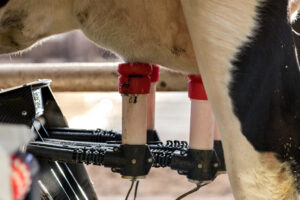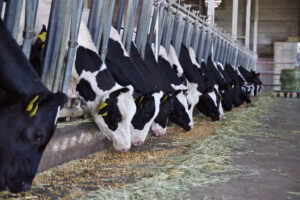After the EU ban on antibiotics as growth promoters from animal feed, it was urgent to find new options. Phytogenic feed additives soon came into the picture as good alternatives. Despite the complexity of these products, the applications and knowledge is growing ever since.

Why are phytogenics solutions out of the box?
It’s been 15 years already since the European Union (EU) banned the use of Antibiotic Growth Promoters (AGP’s) in livestock feed in the EU to limit the potential development and transfer of antibiotic resistance of bacteria. After the EU ban in 2006, more countries around the world followed and did the same. The aim of AGPs in animal feed has always been to prevent bacterial infections and subsequently to promote growth. When removing such a powerful tool comes with several challenges. It is therefore critical to develop cost-effective antibiotic alternatives that keep animal health and performance at the desired level. Over the years, special attention has been drawn to phytogenic feed additives as an alternative to AGP’s to increase feed intake, digestion, feed efficiency and animal performance in a more natural way.
What are “phytogenics” again?
Phytogenics used as feed additives include a wide range of plant bioactive compounds derived from herbs, spices, and extracts (such as essential oils) with beneficial effects on animal health and production. In practice there are 3 main regulatory statuses for herbal products: the medicine, the raw material and the feed additive. In animal nutrition, the main category of interest is the feed additive group, that combines a set of subgroups that really target and regulate the functionalities of the phytogenic. These subcategories are sensory phytogenic additives, technological additives for improvement of feed quality and safety, as well as additives promoting animal health and welfare (zootechnical additives). Plant-based solutions are used in a variety of farm animal species, including poultry, swine, dairy, beef and fish.
Performance boost and methane reduction
In today’s farming practices, performance parameters such as feed intake and growth are the main drivers for a profitable farm. However, animal health and welfare, product quality and sustainability are becoming just as important and influence management practices and animal feed choices. Plant-based solutions are therefore also in scope and also studied for their immunomodulatory effects, their effect on product quality and their capability to reduce the loss of Nitrogen and Phosphorus for all species, methane formation by ruminants amongst others by modulating the rumen bacteria. But also antimicrobial/antiviral, antioxidative and anti-inflammation effects and improvement in the palatability of feed and gut development/health have been demonstrated when using phytogenics.
Impressive scientific results
The huge amount of papers on plant extracts solutions in animal nutrition confirm their efficacy. Since then, there is no need to debate around this question. But we should focus more on the criteria to choose the best product among the others. Measurable parameters such as feed efficiency are monitored in trials and are a good basis to evaluate the product efficacy in-field. But consistency must be proven through at least 3 different ways:
- Trials carried out at experimental stations even if it is not easy to duplicate representative challenge conditions into this kind of structures
- Multiple trials under various market conditions that are representative of the different challenges faced by the animals, but for which questions remain with regard to statistical inference
- A meta-analysis that provides a powerful statistical analysis as well as being representative of the various challenges on the ground.
Some may still call plant-based solutions’ viable alternatives to AGP’s. But the number of applications and the complex mode of actions of these products seem to even outperform AGP’s. The term alternative might therefore not fully cover the value and power of phytogenics for farm animals.
Ongoing research
The research in phytogenics for use in animal feed not only took flight after the EU ban on AGPs, but continues at a fast pace today. This is mainly due to the fact that plant-based additives include a wide range of plant bioactive compounds and it takes time to unravel these complex molecules and their mode of action, consistency, quality, possible interactions between compounds in phytogenics, and efficacy when supplemented in animal diets. Some studies indeed show no results or variable results when using in-feed phytogenics, but this was also the same with AGP research at the time and could be due to a lack of challenge in the trials to express their potential. The large body of research is all about finding the right dosage, molecule and application that works. And the complexity can be the reason that some people do not yet believe in the power of these plant extracts and essential oils and question their mode of action and cost-effectiveness. Yet, the use of plant extracts is subject to a strict regulatory framework and the positive results on production parameters for a range of different farm animals speak for themselves. The application of phytogenics in animal diets should however always be in line with the farm goals or challenges on the farm (diseases or heat stress for example).
Advancing our knowledge on phytogenics
It’s key to continuously share research on the modes of actions and the effect on animal performance and health to inform the industry about the benefits of using phytogenics. Certain restraints such as possible interaction with other feed additives, effective delivery to the animal’s gut and mode of action have been picked up by researchers around the world and exciting work is being done around these topics. The use of novel molecular techniques (-omics) to study them and their effect on animal gene expression might be one of the major breakthroughs and will advance the studies on the mechanisms underlying phytogenic compounds’ functions. Also more insights have been gained already about the synergy of plant extracts and essential oils with other commonly used feed additives. The combination of organic acids and essential oils for example has great potential because it may result in a synergic or additive effect on the intestinal health and growth performance, as observed in previous studies. As research continues, we can certainly say that phytogenics are here to stay in the next 15 years and beyond!





